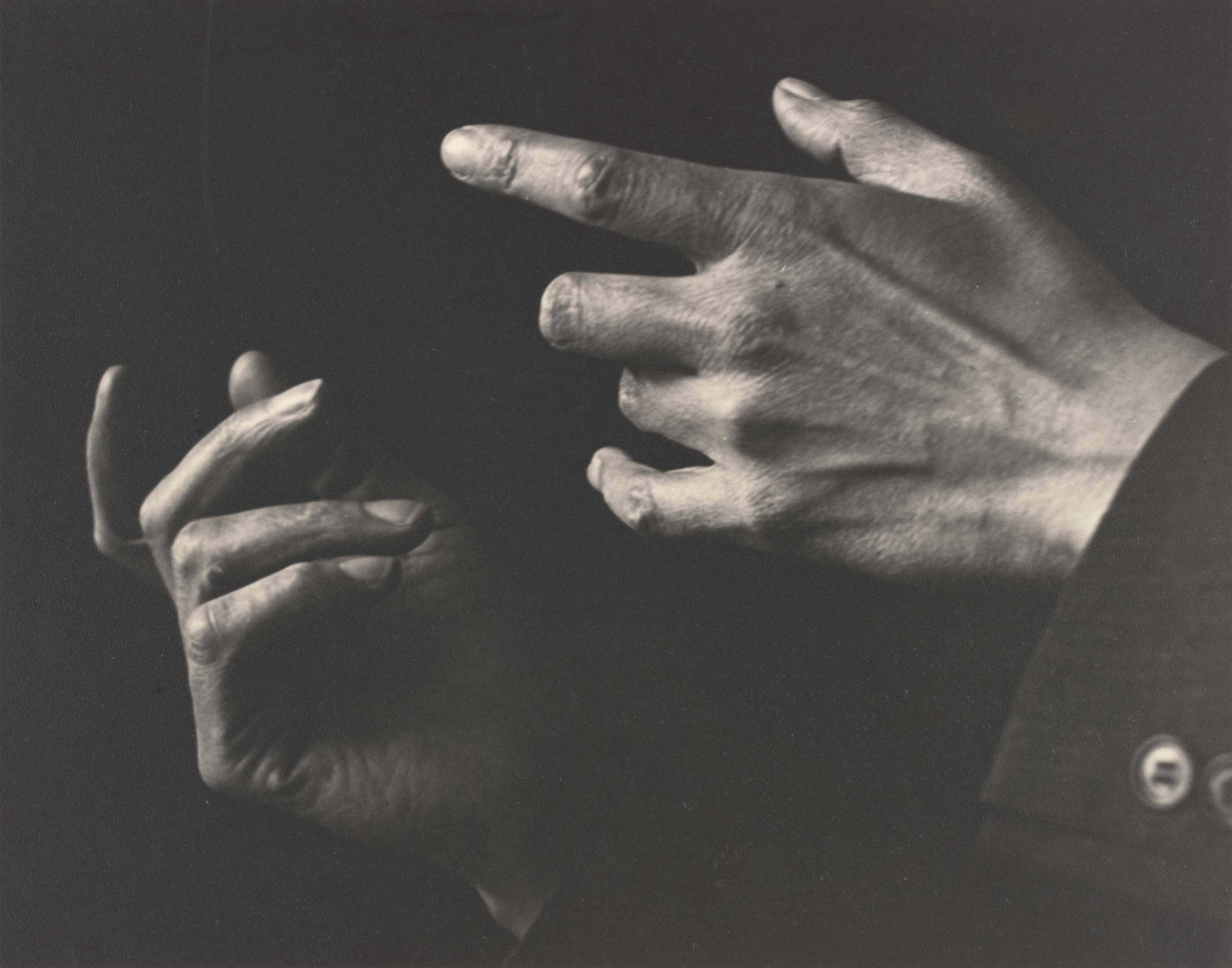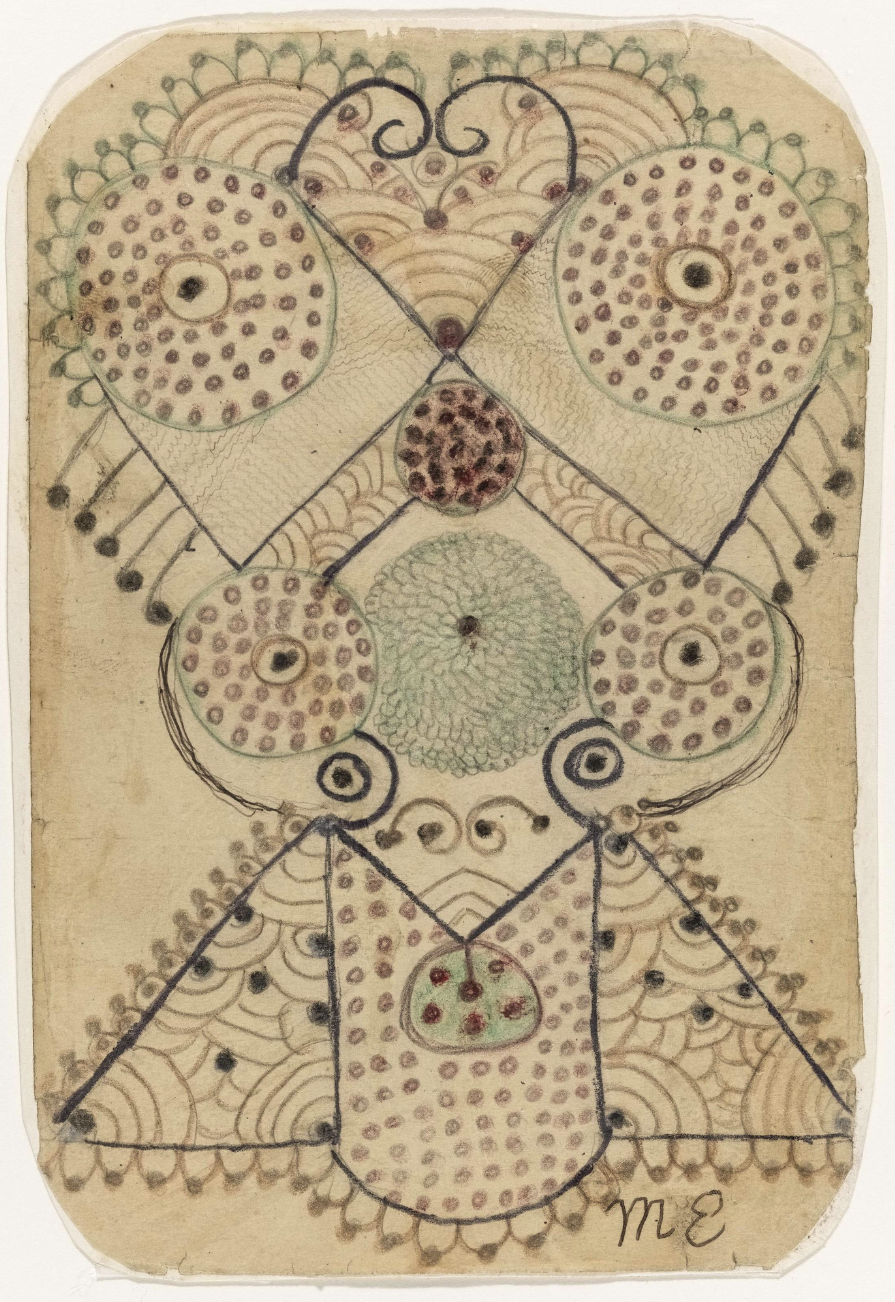
Over the last decade, Grace Wales Bonner has established herself as a sort of synthesizer of creative worlds. The designer has earned a coterie of accolades, including an appointment last year as Member of the Order of the British Empire, for her contributions to fashion—the fruits of her deep research into Afro-Atlantic musical and visual art traditions and her own South London upbringing.
Recently, she turned to the museum as a new forum for that inquiry. After making an acclaimed curatorial debut at the Serpentine Galleries in 2019, which focused on the resonance of shrines with Black culture and aesthetics, Wales Bonner is turning her attention to the hand and its ability to channel new life into everyday materials.
The result is “Spirit Movers,” the latest edition of MoMA’s Artist’s Choice series, which the designer curated alongside curator, writer, and editor Michelle Kuo. The exhibition, which features some 50 works from the museum’s vast permanent collection, takes up residence in the hushed, apse-like space on the institution’s groundfloor—a fitting locale for a show that treats the act of making with spiritual reverence.
The show, which opened Nov. 18, is accompanied by a book, Grace Wales Bonner: Dream in the Rhythm, in which the designer mines the museum’s archives to explore the links between poetry, music, and photography. CULTURED brought Wales Bonner and Kuo together to discuss the intention behind the exhibition.

CULTURED: What were the early premises of this show?
Grace Wales Bonner: I’m fascinated by this idea of the translation of sound. Rhythm is embedded into creating and assembling work, and that was interesting to me as an entry point. There’s also the idea of spirit movers—objects or materials that have had a past life and how they are repurposed into something else. I also wanted to explore how gesture and movement can be part of the art-making process.
CULTURED: Many of the pieces in the exhibition are works on paper—notes, documentation, poems. That feels in line with this idea of past lives.
Wales Bonner: I definitely feel the presence of hands in these works—there’s quite a direct connection to making. It’s also about the purity of translation, whether through assemblage or writing. Again, it connects to the idea of spirit movers, as if something is moving through the hand, what moves through the material and what emerges from that movement.
Michelle Kuo: One example of these works on paper is by Minnie Evans. It’s a diminutive work with all these curvilinear tracings in different colors. For Evans, making these drawings was a spiritual practice—one that maybe even channeled certain mysterious forces.
Another example is an Agnes Martin work, essentially a gold leaf monochrome surface. When you look up close, you see these are trembling hand-drawn incisions. There’s this really nice play throughout the show between systems and the handmade—two processes that speak to the ritualistic, meditative action Grace mentioned. Many of the objects and images in the show are simply some kind of duration—whether of making or of past lives.

CULTURED: You had free reign over MoMA’s enormous permanent collection for this show. What were some of the early touchpoints that helped you cut a path through it all?
Wales Bonner: I was really inspired by Benjamin Patterson. I didn’t know much about him before this exhibition, but I was very drawn to his work. He seemed like this mysterious figure, and I was fascinated by trying to decipher his work through the traces he left behind—his instructions for performances were these cryptic clues to understanding his work. Patterson as a starting point allowed for a lot of freedom in thinking about the people and materials that could come together in the exhibition.
Kuo: And his attention to the everyday, like so many Fluxus artists, highlighted these mundane events—water dripping, a light turning on and off—linking them to some kind of performative culmination. The discovery process was such a big factor in establishing this range of works in the show. I remember when you came to visit MoMA’s big warehouse… I don’t know if you found that helpful.
Wales Bonner: It’s strange to encounter these amazing works in a warehouse. As soon as they come out of the crate, their energy fills the space. MoMA’s collection is so vast that the challenge was to gather around a certain theme, to create some imaginative potential between the works. There are so many ways it could have gone.

CULTURED: Michelle, how has this process differed from previous collaborations you’ve overseen for the Artist’s Choice series?
Kuo: Bringing in collaborators for Artist’s Choice has always been about putting forward an unorthodox vision of the permanent collection—and of history—in ways that curators might never do. Grace’s sensibility comes from years of deep archival research into Afro-Atlantic history, but also into materials. Grace has mentioned being inspired by the way that clothing offers a direct and sudden connection to these histories in her own work. This seemed like a natural and exciting opportunity.
CULTURED: Grace, what is the effect you want to achieve when people enter the gallery?
Wales Bonner: It’s important to me to leave space around the work so that you can have a very direct and close encounter with it. I want each one to feel like a portal into a certain feeling.
Kuo: Grace created a quiet and meditative space in a niche that isn’t connected to any other spaces in the museum. So, “Spirit Movers” has a chapel-like feel. We should also mention the collaboration with Peter Mabeo.
Wales Bonner: Yes! It was special to work with Peter, an incredible designer working with artisans in Botswana who made some display elements in the exhibition. In the display, I wanted to play with the natural materials—brass, panga panga wood—that appear throughout the exhibition.

CULTURED: This exhibition is unique for the Artist’s Choice Series, in that you also put together a book Grace Wales Bonner: Dream in the Rhythm. What was the impetus behind it?
Wales Bonner: I was so inspired by the photographs in the collection. I wanted to create something that explored the themes of the show while remaining pure in terms of form. The book explores sonic potential embedded within photography and poetry. Overall, this process has been about ways of seeing, and translating ideas through completely different mediums. That’s why I got into design in the first place.
CULTURED: Grace, does the process of putting this show together mirror your approach to fashion design?
Wales Bonner: Ultimately, no. This has been a chance to work on a longer timeline, to create something that lasts longer than a 10-minute fashion show. That’s a different headspace. I see my research process as an artistic and spiritual practice. It fuels everything I do whether that’s designing clothes, curating an exhibition, or creating a publication. It’s one of the most pure, spiritual, and direct parts of my work. That process of gathering and assembling is very meaningful for me.
Kuo: Grace, you’ve always linked disparate fields together, whether it’s design, music, literature, poetry, or the visual arts. You’ve also done that in this show with different histories. I love that you're going to see a Bauhaus photographer's image of a Black orchestra conductor’s hands in the same space as a set of prints by Jean Dubuffet that look like rubbings of the earth.
It shows us that we can think about modernism in synesthetic ways—not just privileging the visual, but sound, touch, even temperature. All of this undermines Western histories that center the visual in many ways, and offers a singular look into the histories of modern art that we have at the museum.
Wales Bonner: Oh, thank you. That’s beautiful.
"Spirit Movers" is on view through April 7, 2024 at the Museum of Modern Art in New York.










 in your life?
in your life?

